Famous Female Computer Scientists
ITCareerFinder highlights some of the most popular and accomplished women in computer science.

Women account for only 19% of computer science graduates in the US, according to the latest data from the National Center of Education Statistics. This disparity is confirmed by an extensive study from the Allen Institute for AI which place the rate of male to female computer scientists at 4:1.
Despite representing a small percentage of the CS workforce, female computer scientists have made some revolutionary contributions to the field. These achievements are made doubly special because women have historically had far less access to education and employment.
This page will spotlight the great women of computer science and outline some of their key accomplishments.
Here are the 5 most famous female computer scientists:
Grace Hopper | 1906 - 1992
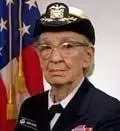 The most popular female in computer science, Grace Hopper is a trailblazer and inspiration. After receiving her PhD in mathematics from Yale in 1934, Hopper joined the U.S. Naval Reserves where she ultimately achieved the rank of Rear Admiral.
The most popular female in computer science, Grace Hopper is a trailblazer and inspiration. After receiving her PhD in mathematics from Yale in 1934, Hopper joined the U.S. Naval Reserves where she ultimately achieved the rank of Rear Admiral.Throughout her storied career in the military, academic and private sectors, “Amazing Grace” as she was later known, had some serious computer science accomplishments. Notable achievements include being one of the first computer programmers to work on the Harvard Mark 1 (an electromechanical computer used to break code in WW2), pioneering the development of COBOL (one of the first high-level programming languages - that’s still widely used), and creating the first compiler (which converts English into machine language that computers understand). She’s also credited with coining the term “bug” for a computer malfunction after finding a dead moth trapped in a relay.
Hedy Lamarr | 1914 - 2000
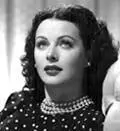 This famous female of computer science and engineering has a fascinating story. The daughter of a bank director father and concert pianist mother, Hedwig Eva Kiesler always had a brilliant mind. She would take apart and reassemble any machine she could get her hands on to discover how it worked. A product of her time, Hedy’s intelligence went largely ignored as she grew into a beautiful woman and became a successful actress in Austria and America.
This famous female of computer science and engineering has a fascinating story. The daughter of a bank director father and concert pianist mother, Hedwig Eva Kiesler always had a brilliant mind. She would take apart and reassemble any machine she could get her hands on to discover how it worked. A product of her time, Hedy’s intelligence went largely ignored as she grew into a beautiful woman and became a successful actress in Austria and America.During a whirlwind life that included befriending (and impressing with her genius) infamous characters like pilot and businessman Howard Hughs and MGM Studios co-founder Louis B. Mayer, Hedy met composer and fellow tinkerer George Antheil. Together, Hedy and George invented a secret communications system to help defeat the Nazis in WW2. Years later, their “spread spectrum” and “frequency hopping” inventions would help pave the way for ubiquitous technologies like Bluetooth, WiFi and GPS.
Barbara Liskov | 1939 -
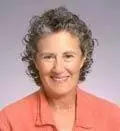 One of just two females in her graduating class at UC Berkeley, Barbara earned her BA in mathematics and physics in 1961. She later became one of the first women in America to be awarded a Ph.D. from a computer science department when she graduated from Stanford University - the top-ranked CS school in California - in 1968. She is currently an institute professor at MIT.
One of just two females in her graduating class at UC Berkeley, Barbara earned her BA in mathematics and physics in 1961. She later became one of the first women in America to be awarded a Ph.D. from a computer science department when she graduated from Stanford University - the top-ranked CS school in California - in 1968. She is currently an institute professor at MIT.Liskov’s groundbreaking contributions to computer science include developing the CLU programming language which helped advance the field of object-oriented programming, and penning the Liskov substitution principle, a programming property that states sub-objects must be interchangeable without breaking the program - a key concept in coding. Her extensive body of work earned her the Turing Award - the highest distinction in computer science - in 2008.
Ada Lovelace | 1815 - 1852
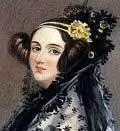 When it comes to female computer scientists, it doesn’t get more old school than Augusta Ada Byron, Countess of Lovelace, aka Ada Lovelace. The only daughter of famed English poet Lord Byron, Ada evidenced a superb talent for mathematics at an early age. Thankfully, her mother encouraged her love of science and mathematics, which was almost unheard of for women in the mid-1800s.
When it comes to female computer scientists, it doesn’t get more old school than Augusta Ada Byron, Countess of Lovelace, aka Ada Lovelace. The only daughter of famed English poet Lord Byron, Ada evidenced a superb talent for mathematics at an early age. Thankfully, her mother encouraged her love of science and mathematics, which was almost unheard of for women in the mid-1800s.Around 1832, Lovelace met inventor and mathematician Charles Babbage, who became her mentor. Babbage created the Analytical Engine which was essentially the first mechanical computer. Arguably the world’s first female computer scientist, Ada went on to describe how the Analytical Engine could be programmed to compute Bernoulli numbers - this is credited as the first computer program.
Margaret Hamilton | 1936 -
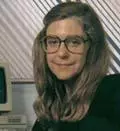 Born in small-town Indiana, Margaret Hamilton went on to become one of the greatest female computer scientists. The pinnacle of her career as Director of the Software Engineering Division at MIT’s Instrumentation Laboratory was developing the on-board flight software for NASA's Apollo program. Beyond spearheading the critical guidance software that enabled America to land on the moon in 1969, Hamilton is credited with coining the term “software engineering.”
Born in small-town Indiana, Margaret Hamilton went on to become one of the greatest female computer scientists. The pinnacle of her career as Director of the Software Engineering Division at MIT’s Instrumentation Laboratory was developing the on-board flight software for NASA's Apollo program. Beyond spearheading the critical guidance software that enabled America to land on the moon in 1969, Hamilton is credited with coining the term “software engineering.”Margaret’s contributions to computer science and software engineering earned her the NASA Exceptional Space Act Award in 2003. In 2016 she received the Presidential Medal of Freedom - America’s highest civilian honor - from Barack Obama.
Final Thoughts
Upon researching these famous female computer scientists, I noticed some interesting trends. Many of these women had major comp-sci accomplishments despite their gender - meaning they had to be so wealthy or connected or otherwise undeniable to even get their foot in the door. While the playing field is more even now, the number of females in computer science is still too low. By depriving ourselves of more women in computer science, we’re missing a unique viewpoint and the brain power of half the population in a crucial field. Hopefully the next generation of girls and women will pursue careers as computer scientists so they - and society - can reap the rewards.
Further Reading
Additional resources for anyone interested in pursuing an education and career path in computer science.
